After a few weeks within the conservation department on my work placement, and having been suitably inducted and trained, I have experienced a few of the tasks expected by this busy department. These include returning exhibition posters to storage; conservation of original locomotive lubrication maintenance brass nameplates for future use; condition report photography; and how to navigate the collections database – a vital tool in any museum to keep track of objects.
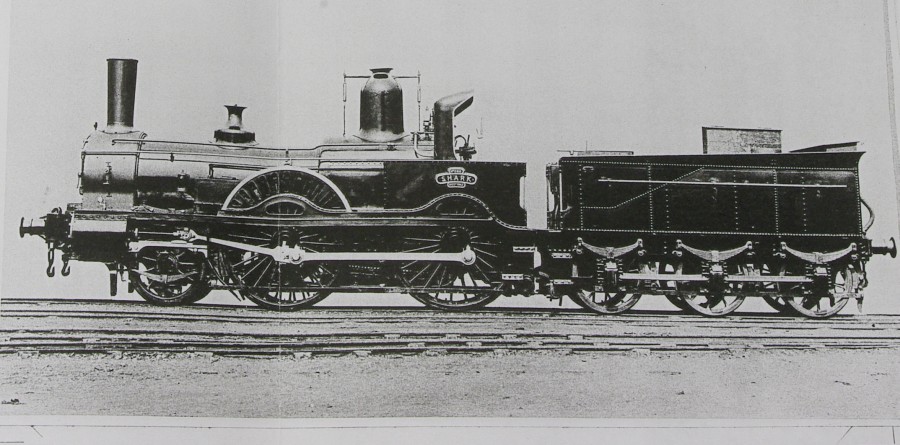
But back to the project.
Few images of “Shark” (A Falcon class 2-4-0 tender locomotive built at Nine Elms London for the L.S.W.R.) remain – not surprising, as photography was a new technology when she was built in 1867, and still new when she was scrapped in 1895. We can only speculate as to why the model was constructed.
Perhaps, not accurate enough to be a makers’ scale model (which would be expected to be made from iron or brass), “Shark” was made by an old driver or fireman, so enamoured by the old girl that he wanted to make a keepsake model before she was scrapped, using tools he had at home. Having said that, the dome, safety valve dome and wheels appear to have been lathe turned.
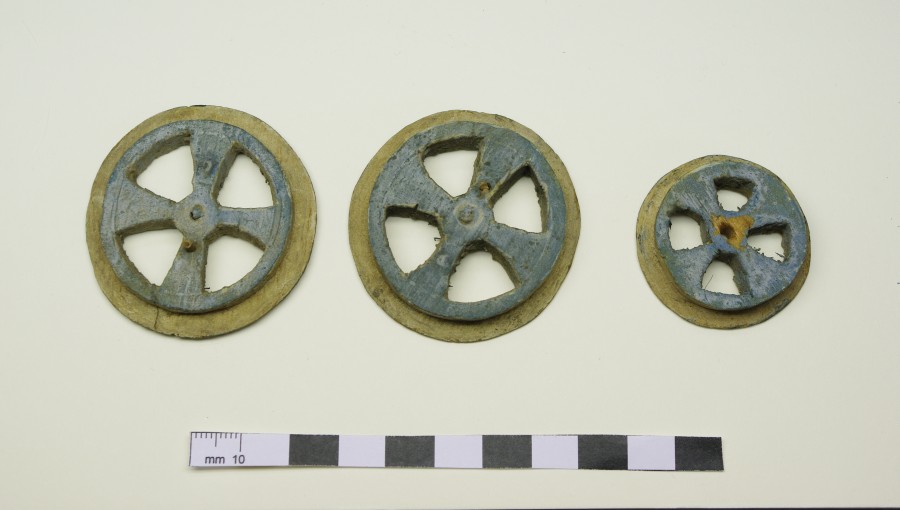
This driver/fireman-built theory might have some substance, as many small features such as oilers, pipes and pressure gauge are all present – features only a relatively knowledgeable person would be aware of. Although it would be easy to think of “Shark” as a toy, this model has only a small length of display track to sit on, is delicate and has survived for many years prior to being a museum object.
The model was brought into the National Railway Museum collection in 1975. An old accession label with the model, from the British Transport Commission Historic Relics Section and dated 1952, has some intriguing faded text: “Ealing Studios 20/5/52”. Recollections of the comedy films of the 1950s came to mind, especially The Titfield Thunderbolt. Could our “Shark” possibly be a film prop from the 1950s and not an earlier model? Certainly there is no documentation available to prove or disprove it.
After some thought, and knowing that paint technology has changed considerably over the years, it was decided to try and establish the date of the model from very small paint flake samples. These were found in the storage box but clearly had the same colour and appearance of the model.
The University of Lincoln has a linked consultancy, Crick Smith, founded by former students and now a major presence in the field of architectural paint research. Among other services, Crick Smith enables clients to establish original paint schemes of important historic buildings, and has recently been entrusted with the paint sample archives of English Heritage.
Fortunately for me, the principles are also lecturers at Lincoln. They responded enthusiastically when I approached them, and I was able to use their state of the art equipment to analyse the samples.
After encapsulating the samples in an acrylic plastic and preparing them, I trekked to Lincoln to carry out the analysis. Of the three samples, one was clearly a modern type brilliant yellow pigment, not linked to the model. But the other two – when viewed at 200x magnification and under ultra violet light with the Leica LAS Core software – were identified by Michael Crick Smith as very typical of 19th century, based on the pigment size, diffusion and fluorescence pigments, with layers of top coat, undercoat and a gesso type sub layer.
So, we probably have a Victorian model. But why “Ealing Studios” is written on the label still remains a mystery. Perhaps it was borrowed by the studios for research? We will probably never know.
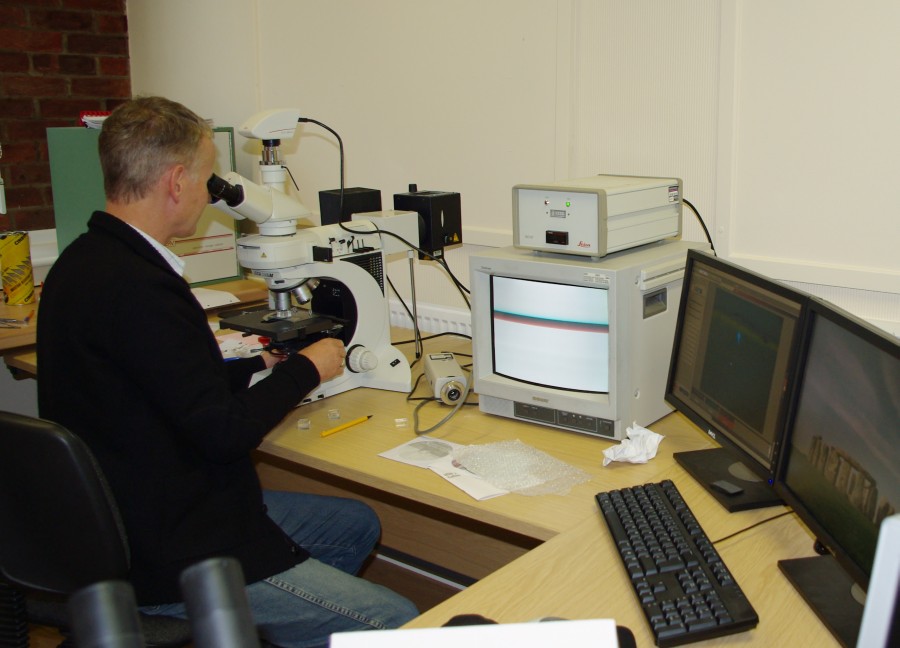
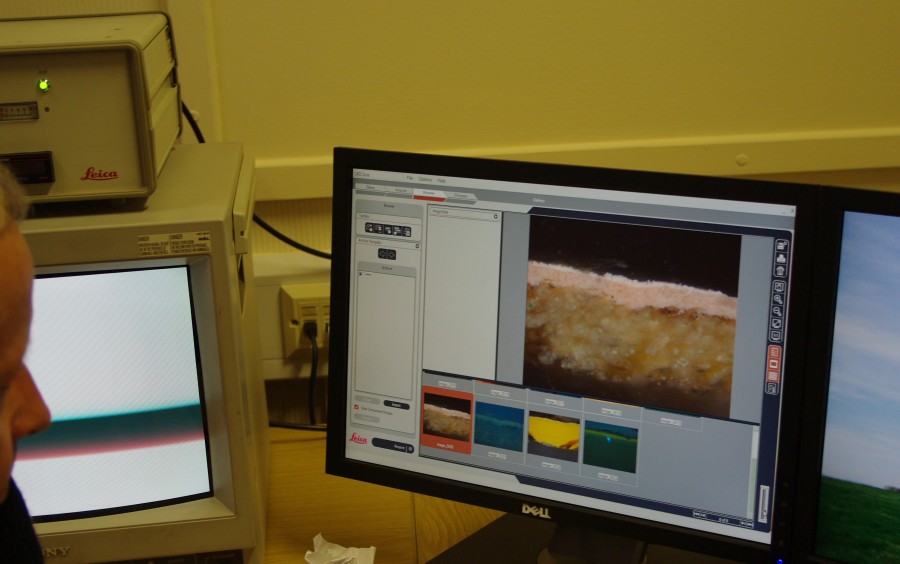
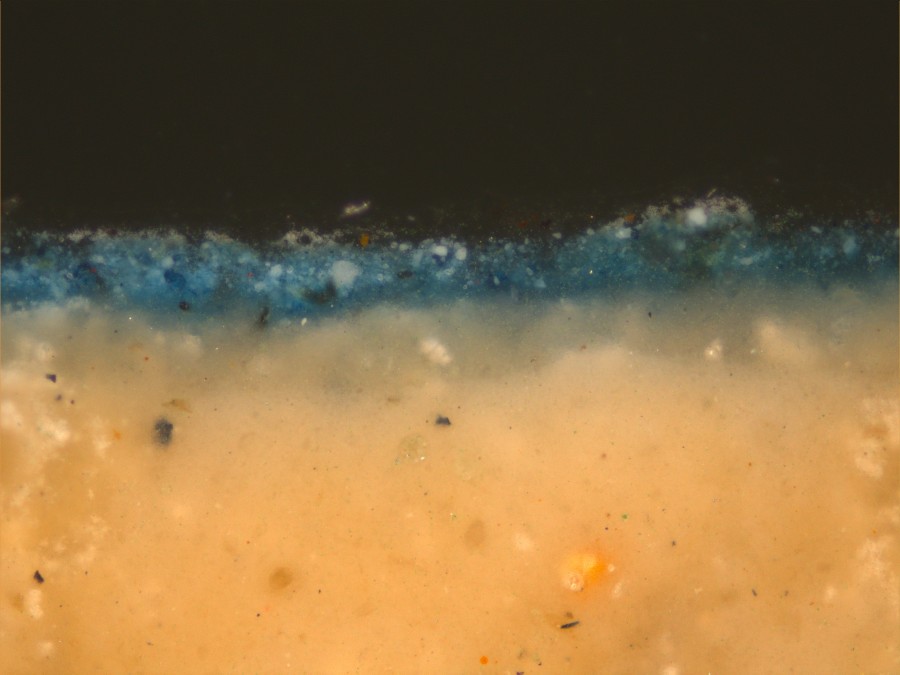

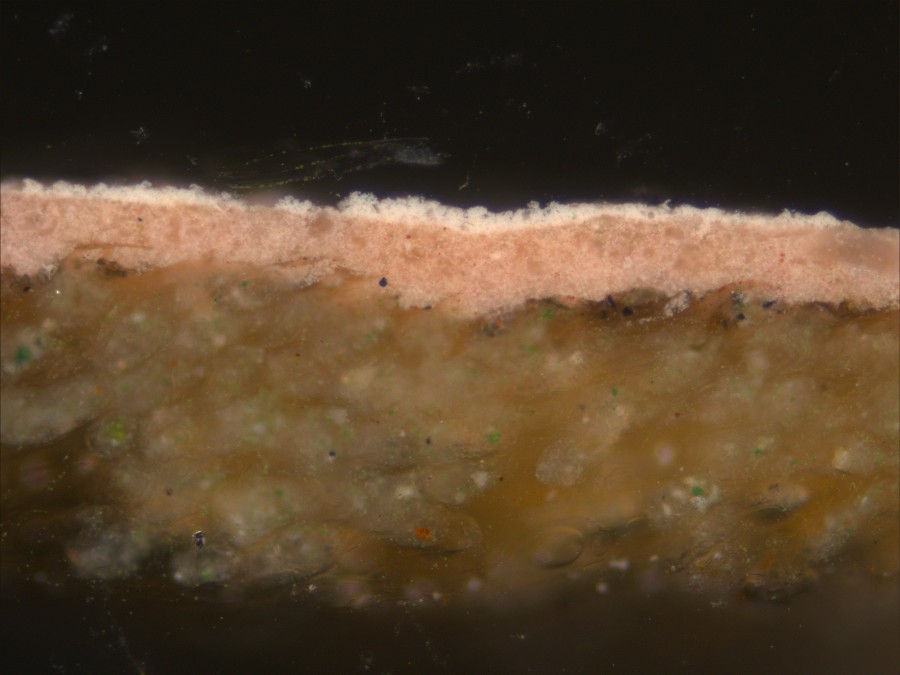
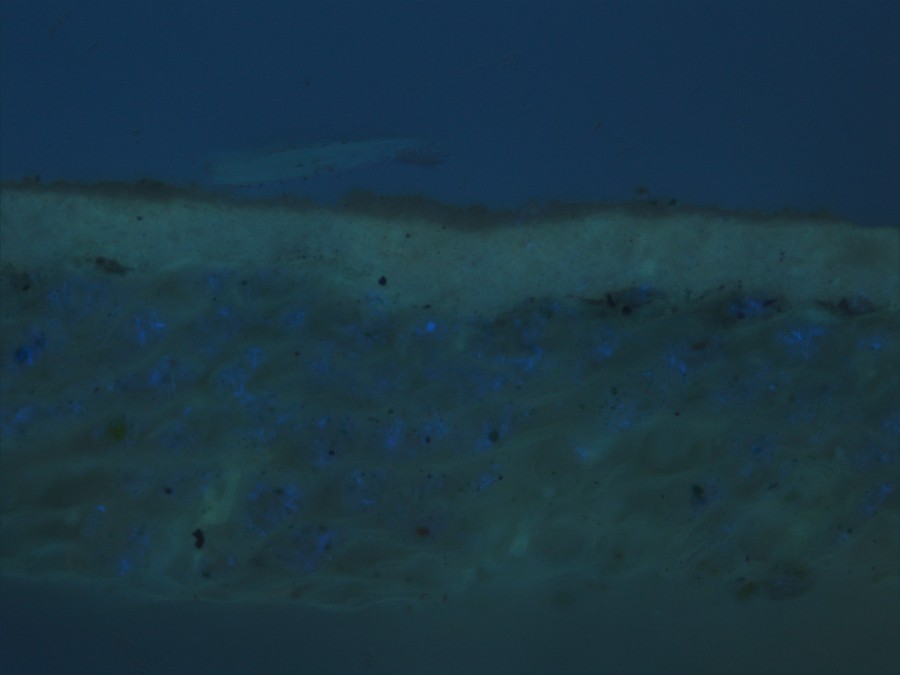
Read Conserving ‘The Shark’: part 1 here.
This is a guest post by Robin Gibson, who undertook a placement with the Conservation team.
That tag from Ealing is intriguing. I have come across a number of vintage items that were acquired by film studios here (U.S.) as props, used or not, then sold off when they began to dump their inventories in recent decades. Were this the case, the “Shark” model might have been both a keepsake and, later, a prop. How to determine this is beyond me, but I know that I’m going to take a very close look at my DVD of “Titfield Thunderbolt” to see if “Shark” can be seen lurking in the vicar’s study.
My great grandfather worked as a guard for LSWR. His pocket watch (1882) appears to have a Falcon class train painted on the dial. Happy to send a photo
A short while ago I acquired a model which looks to have stated out as a 6′ 6″ driver LSWR express locomotive and may have been one of the “Falcon” class. The model is incomplete and has gone through at least two stages The original components look to be of some age and are of “museum” quality An attempt has been made to use these parts in a live steam model, the workmanship here is average, some parts clearly do not fit and although the dimensions are wrong it looks as though the aim was to make it look like a well tank. I am currently gathering information to rebuild the loco as it may originally have looked. I can supply pictures if these would be of interest.